The tunnel system can only be visited as part of a guided tour. As the temperatures in the tunnel system are around 8°C all year round, appropriate warm clothing should also be worn in summer.
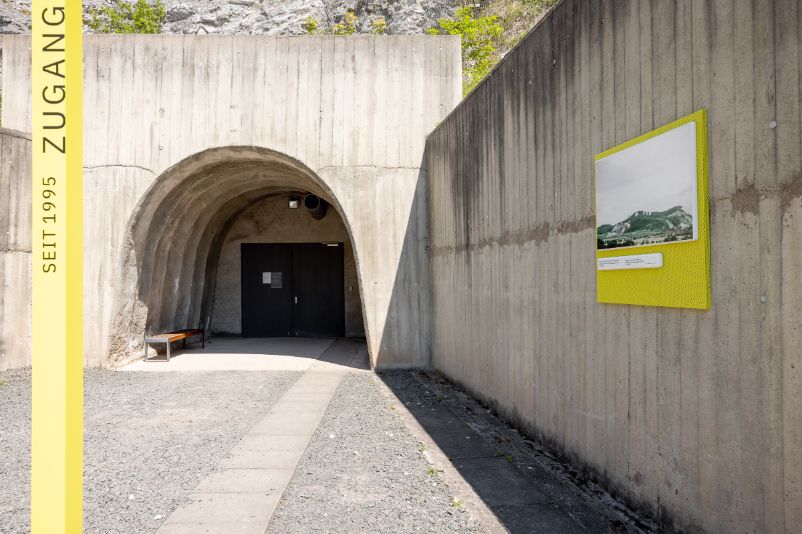
Access Tunnel
In the Potsdam Agreement of 1945, the Allies agreed to demilitarise Germany and dismantle German armaments production. For this reason, the entrances to the tunnel system were blown up by the Soviet military authorities in 1947/48. As a result, the underground complex remained closed for several decades, even after the Mittelbau-Dora Memorial was founded in the 1960s.
Only since 1995 the tunnel system has been accessible to visitors through a newly constructed access tunnel. This tunnel leads from the former entrance to tunnel B right through the Kohnstein to the entrance area of tunnel A. From there, part of tunnel A and three transverse chambers can be visited.
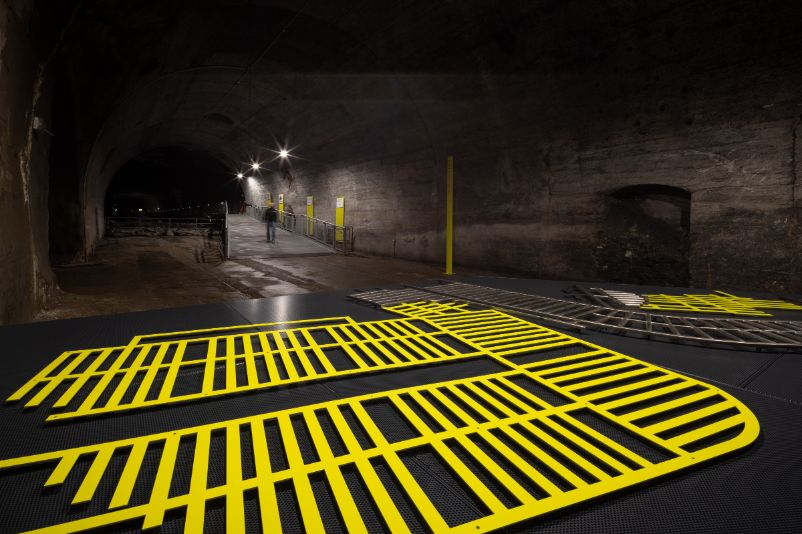
Tunnel Model
At the beginning of the historic tunnel A, a steel model illustrates the dimensions and development of the tunnel system from a fuel depot for the Wehrmacht's war preparations to an underground armaments factory. It clearly shows the size of the entire facility, only a very small part of which can be visited.
The gigantomaniac plans of the National Socialists, which were already realised in construction drawings at the end of 1944, are also recognisable. This illustrates the reality of the Mittelbau-Dora concentration camp as a construction camp with murderous working conditions: The vast majority of inmates were not used for actual labour in armaments production, but rather for the continued construction of ever new underground relocation projects for the targeted future armaments production. Most of these plans remained a delusion, but the thousands of deaths of the exhausted inmates on the construction sites were real.
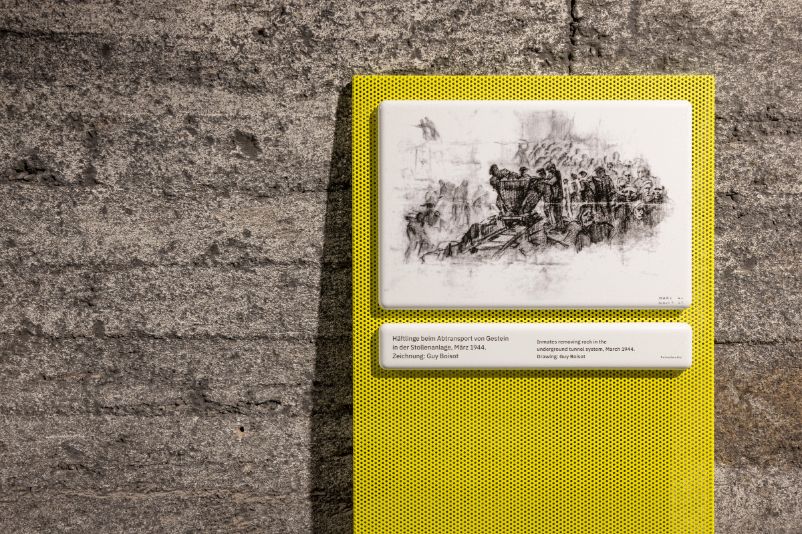
Tunnel A
The ladder-shaped system consisted of two tunnels and a total of 46 side chambers that ran between them. The two tunnels - tunnels A and B - ran through the entire Kohnstein from north to south. Railway tracks were laid in both tunnels, which are still visible on the ground today.
The situation as it was found when the tunnel was opened has been changed as little as possible. Destroyed factory equipment, remnants from production and fallen pieces of rock are strewn about. A visitor walkway leads over the remains and makes the tunnel accessible. In the area of the ramp leading onto the walkway, selected quotes and drawings by former inmates illustrate the living and working conditions in the tunnel.
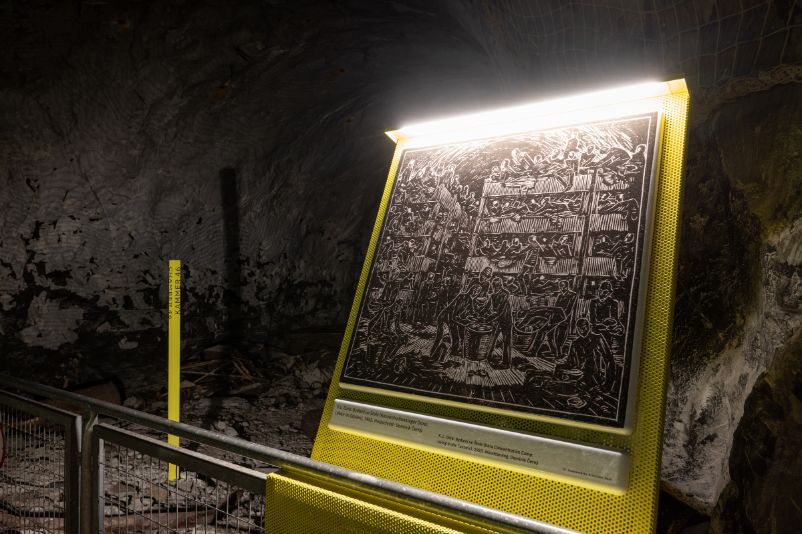
Chamber 46
When the first inmates arrived at Kohnstein in August 1943, there was no above-ground barracks camp. Instead, the inmates were housed in four side chambers of the underground tunnel system, three of which can be visited today. In the early days of the camp, several thousand inmates slept in each of these "sleeping tunnels", crowded together on four-storey wooden bunks built in a scanty manner. A reproduction of a woodcut made by former inmate Dominik Černý after 1945 shows the situation in these completely overcrowded sleeping chambers at the entrance to Chamber 46.
This initial phase of the Dora subcamp in particular, with its murderous living and working conditions, gave rise to the term "the Hell of Dora", which later appeared in the memoirs of many survivors. Thousands of inmates died here during these months; it can be assumed that there are still mortal remains in the tunnel. It was not until the early summer of 1944 that the last inmates were able to move into the now completed wooden barracks in the inmates' camp above ground.
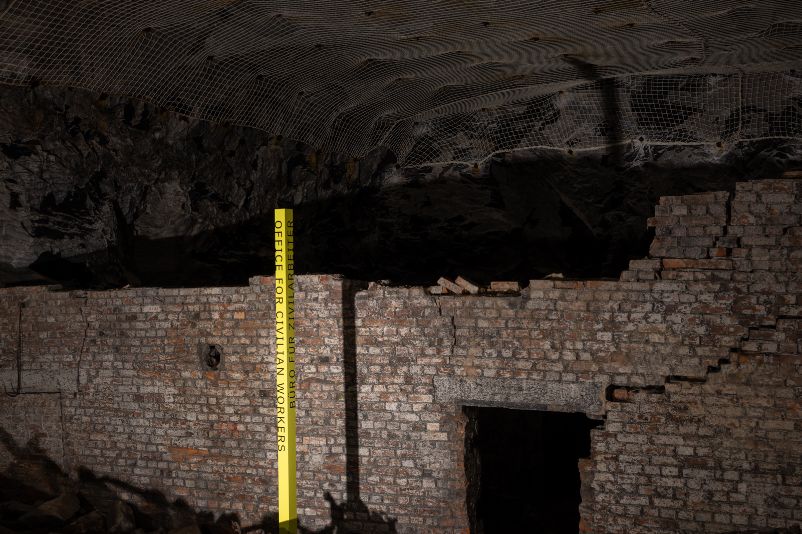
Office for Civilian Workers
In addition to concentration camp inmates, numerous civilian employees of the involved companies also worked in the underground armaments factories. Engineers, administrative staff and technicians were employed in the production of the V-weapons and in the construction of the tunnel system, where they were supposed to supervise the work of the inmates. They had their offices in barracks in front of the tunnel entrances or in the underground facilities. According to the original plans of Mittelwerk GmbH, the ratio of inmates to German civilian workers was supposed to be eight to one. In practice, the ratio was only around two to one, as the difficulties encountered in production were too severe.
Many civilian employees behaved indifferently towards the inmates, but there were also cases of vigilante justice by the civilian staff in the event of alleged breaches of the rules. Over time, the number of violent assaults on inmates must have become so excessive that the SS felt compelled to make it clear that the punishment of inmates was the responsibility of the guards.
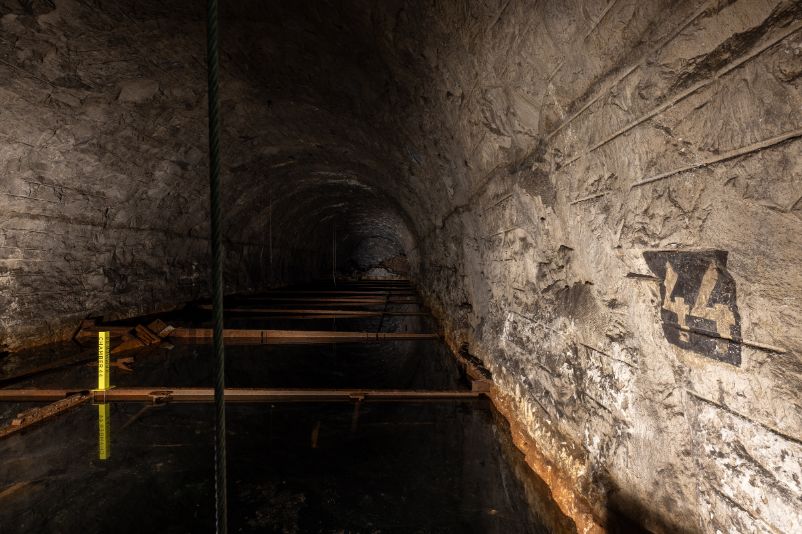
Chamber 44
In the first half of 1944, the inmates gradually moved into the barracks camp that had been built above ground. From August 1944, the previous "sleeping tunnels" were therefore used as production sites for the V1 flying bomb. Concentration camp inmates also had to perform forced labour for this. The inmates deployed in the production detachments had previously been selected for work in weapons production mostly on the basis of their technical skills. Although the living and working conditions of these production inmates were better than those in the construction detachments, they too fell victim to illness, injuries, exhaustion and the violence of the guards and civilian workers.
The military successes of the "vengeance weapons" V1 and V2 remained limited. They did not bring the turnaround in the war for the German Reich that the Reich government and the Wehrmacht leadership had hoped for. Nevertheless, thousands of people died in the bombing of cities such as London and Antwerp.

